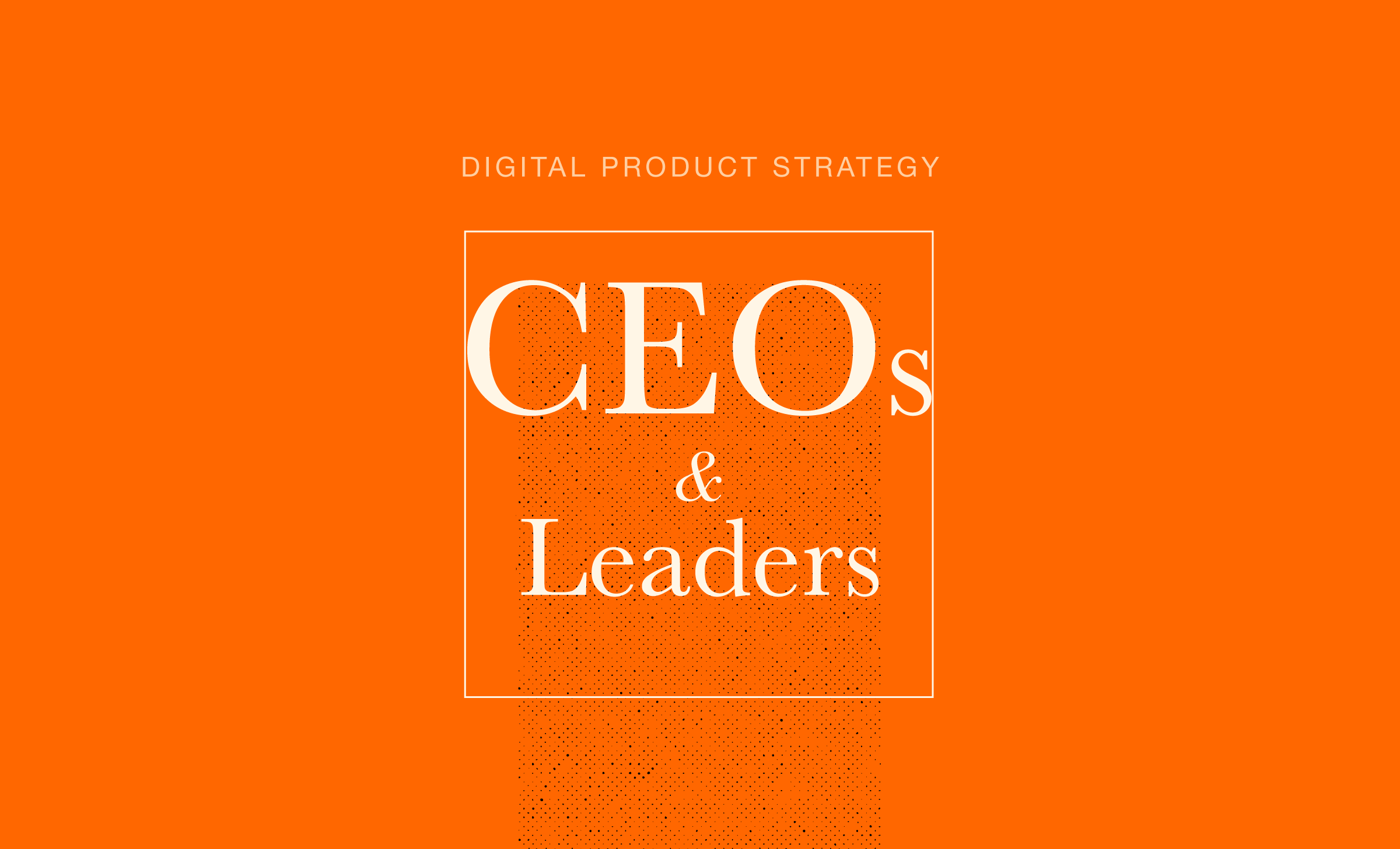Invest in Your Digital Products Up Front or You'll Pay for Them Forever
6 min read
You're all set to make a slam-bang digital product. You want it to be your organization's next big hit. It better be, because users aren't exactly raving about your current offerings. You must deliver in a tight budget. Naturally, an oppressive deadline looms.
The way you see it, you don't have time or money for luxuries like user testing or observation. The same goes for personas or prototypes. Strategic investigation? Forget it. You're going to need to cut all fancy corners. You've got the user wish list and a team of developers ready to roll. Time to dive right into code. They can Agile the remaining requirements along the way. Someone can make the new app look pretty just before launch, or even just after.
When a product is hard to use, your organization faces real costs.
We get it. These shortcuts feel like the right thing to do and, at least initially, they save money. But in reality, they only buy you one thing: bad user experience. And a product with bad user experience will cost you forever.
Long-Term Costs of Bad UX
When a product is hard to use, confusing, or badly designed, your organization faces real costs, some of them obvious and others less apparent.
- Increased Training Budget: Many companies try to make up for their hard-to-use digital products by training people to use them. The more complex the interface, the longer training takes and the more often it must be repeated.
- Increased Support Costs: Poor usability taxes your customer support systems, especially your call center. Poor user experience will generally lead to increased call volume and longer support calls. All help channels (chat, text, email, etc.) will experience this cost.
- Expensive Fixes: By the time a product is live, interface design decisions are set in stone. Any problems are exceedingly expensive and difficult to reverse, even if a fix would make an app much easier to use. Either you spend significant money, or do nothing at all.
- Wasted Development Time: Taking the cheaper way means cutting requirements corners. Slipshod planning results in sites and apps that require huge amounts of development time for patches and maintenance to keep them functional. Quality suffers and usability remains a nightmare.
- Molasses Efficiency: If the front-end of your digital product is hard to use, you can bet the administrative back-end will be at least doubly bad. When a supposedly thirty-second update takes ten minutes, you're seriously cutting into your team's productivity and racking up huge opportunity costs.
- Brand Erosion: Your brand is defined by the experience people have with you. When someone has a frustrating user experience with your app, they don't blame the app, they blame you. They assume your brand doesn't respect them enough to consider their time and sanity.
- Lost Customers and Market Share: Your customers hate frustrating, unnecessarily complicated sites and apps. They will do anything they can to avoid them. Eventually, your bad UX will drive users away - subscriptions, sales, conversions, revenue, and user engagement of all kinds will plummet. This will allow your competitors an advantage from which you may never be able to recover.
These Costs Never Go Away
Over time, the costs of bad UX will far outweigh the initial investment you could have made in a thoughtful, intentionally designed digital product.
Invest in a site or app that serves your users and can stand the test of time.
And the day will come when you just can't make one more patch or temporary fix. The product will lose viability and it will be long before you were ready to invest in something new. At that point you'll have to make your choice again: go the cheap route and start this expensive cycle over, or invest in a site or app that truly serves your users and can stand the test of time.
Thinking About Investing in Digital Products
Think of your digital products the same way you would any other major project away from work. Let's take a significant home improvement project: Say your kitchen truly, deeply needs to be remodeled. Floors are falling apart, cabinets are dry rotting, pipes are leaking, and nothing works the way it should. You've let it go too long and it must be fixed, now. Sound like any of your apps?
Perhaps you take what seems to be the least expensive and easiest route - you choose the handyman with the cheapest rate or maybe you do it yourself even though you have limited plumbing or carpentry experience.
As things begin to break, you'll pour time and money into fixing them.
A new kitchen completed this way may work initially, but problems are looming. That shiny new floor may look wonderful, but if no one replaced the rotten subfloor, it's just a matter of time before it falls apart again. Your freshly painted cabinets are hiding dry rot that's still underneath. Your pipes don't leak anymore, but that temporary seal would never pass an inspection.
As things begin to break again, you'll pour time and money into fixing them, probably multiple times, especially if you keep choosing the cheaper and easier repair options. In a few years, you'll have wasted more time and money than if you'd simply done it right the first time.
Sites, Apps, and Your Kitchen
This is exactly how many companies approach creating and evolving digital products. Just like our poor crumbling kitchen, their websites, apps, and software require constant upkeep and attention. They're riddled with hidden or not-so-hidden problems, all of which could be avoided with stronger up-front investment.
Thoughtful Products Save (and Make) Money
Investing in good user experience will do more than prevent disaster. It will better ensure project success, help you meet business goals, and save your company significant money.
Long-Term Advantages of Good UX
- Reduced Training Time: Products with a strong user experience require little training. If your site or app serves users excellently, they might not even need to be taught how to use it.
- Reduced Support Costs: Happy customers who accomplish tasks easily don't need to call you for help. Call centers and customer support team costs come right from the bottom line. Imagine what your organization could do with more efficient support delivery.
- Higher Product Quality: Going through the trouble of building a user-centered digital product means you'll focus on other important things like performance, security, forms, and testing. If you address these areas at the beginning, you'll never see the rampant and expensive problems they can cause later.
- More Effective Use of Development Resources: You won't break the bank maintaining well-planned digital products. What's more, they'll stand the test of time. You'll evolve and expand your site or app more easily in response to users' needs and changing market conditions - taking care to go through the proper planning and strategy steps for each new addition, of course.
- Greater Internal Efficiency: If your digital product is user friendly and you've paid due attention to making administration interfaces intuitive as well, your team will spend far less time making updates. They will waste less time doing their job. They will also tear out far less of their hair.
- Brand Enrichment: When an app makes someone's life easier, they recommend it to others. They become repeat customers, possibly even loyal ones. They buy more. They post to social networks. They wear the T-shirt.
- More Customers and Greater Market Share: People love simple, straightforward sites and apps. When something is easy to do and emotionally satisfying, people tend to do more of it. They subscribe, they buy, they contact, they engage with your product. You become the competitor that pulls ahead in the market.
- Project Success: Intentional user experience strategy can help you make the product the big hit it needs to be. The right planning reduces project risk. It ensures users can complete the right tasks easily and that those tasks align with your business goals.
Stretch to Invest in Great UX
The price tag that comes with thoughtful user experience strategy can feel a little uncomfortable at first. After all, training or hiring team members to build expertise, spending more time on project planning, hiring consultants, interacting with users in real life - all these things cost money up front.
But the real project sticker shock comes when you cut corners. Poorly designed sites, apps, or software consume budget month after month and year after year for as long as they're around. Stretch your budget up front. Invest in the user-driven route. It will pay off big time in the long run.





